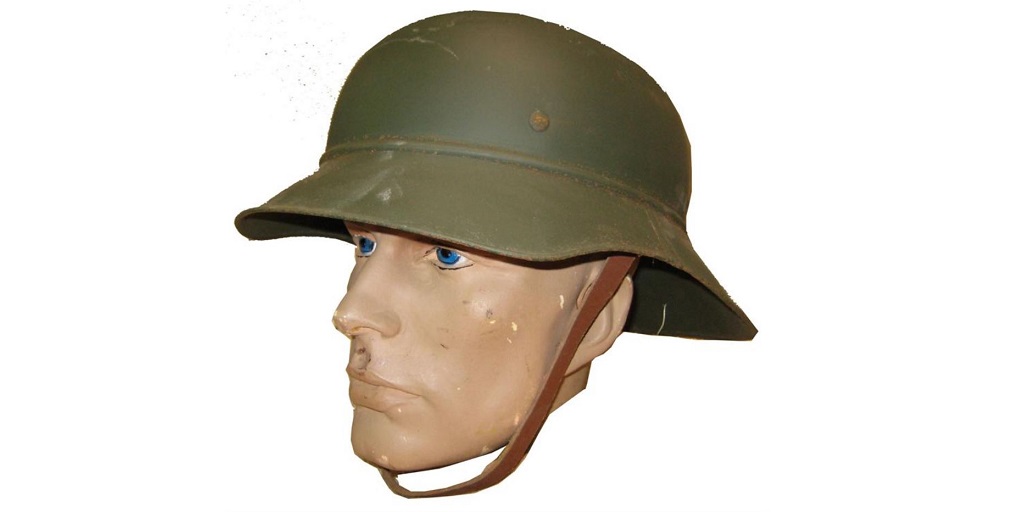The image of the Stahlhelm has been ingrained in popular culture as an icon of all that is sinister. It is even said that Darth Vader’s helmet was inspired in part by the popular image of the Stahlhelm, the steel helmet that was worn by German troops in the Second World War.
But the mystique surrounding this WW2 German helmet is not always what it appears. Let’s consider some unique aspects of the Stahlhelm that you may not have known.
Well, for starters, it’s really actually a WWI German helmet. The Stahlhelm has its origins along the Western Front of the First World War, where head wounds arising from shrapnel fire were dispatching an uncomfortable large number of casualties.
Soldiers at the time were wearing boiled leather Pickelhaube (the infamous Prussian spiked helmet) which offered little protection in the way of artillery and small arms fire. So the Germans rethought their strategy and in 1916 started issuing M1916 Stahlhelm helmets.
That is the origin of this WWII German helmet, which ironically is much earlier than is popularly conceived.
The name itself means “steel helmet” in English, and the helmet possessed quite a few features that made it both highly protective and practical in the field. There’s more than one opinion that considers the Stahlhelm among the best helmets ever designed and produced.
The Stahlhelm’s design featured a flared and relatively low visor that offers excellent visibility without compromising protection. Together with the sides of the helmet, these protected the frontal and occipital lobes of the brain. So it was highly protective without encumbering the wearer.
Moreover, the back of the helmet was also flared and extended far down the back of the head, even partially protecting the base of the skull and nape of the neck. The wide, broad coverage at the rear of the helmet potentially helped protect the brainstem.
Later versions of the Stahlhelm (such as the M35 helmets) featured a helmet shell produced by forming several sheets of molybdenum steel. Molybdenum is very strong and very dense, and its inclusion in a steel alloy made it much more protective, but unfortunately, this process was more expensive and laborious than comparable processes used to manufacture American and British helmets.
One notable drawback of the Stahlhelm was the fact that some soldiers complained it compromised their hearing because it fully covered their ears. This feature was absent on models carried by the German’s enemy combatants – such as the Tommy Helmet (worn by the British) which had a higher, flared rim that did not cover the ears.
Nonetheless, and despite its higher cost of production, the Stahlhelm, particularly the M1935, has gone down in history as one of the most protective (and effective) helmet designs ever produced.
Where Can You Get a Reproduction WW2 German Helmet in Field Grey?
Looking for a high-quality reproduction of a WW2 German helmet? Visit SARCO, Inc., online at SarcoInc.com They carry a wide range of original and reproduction combat helmets, including American, British, Italian, Japanese, and Bulgarian helmets in addition to World War II German helmets.



